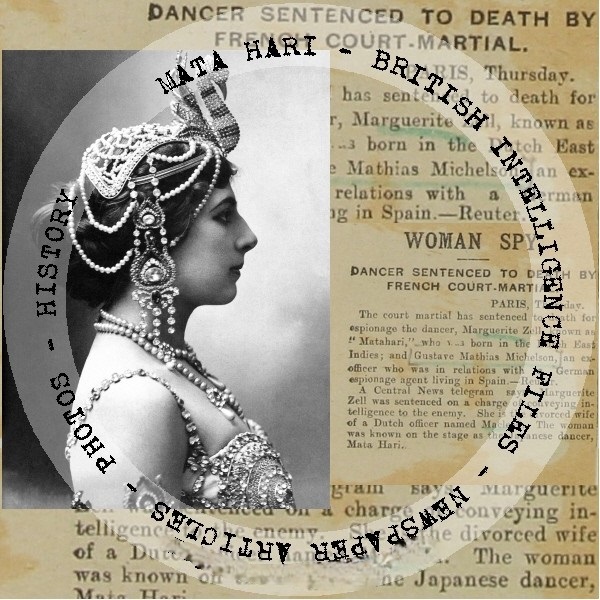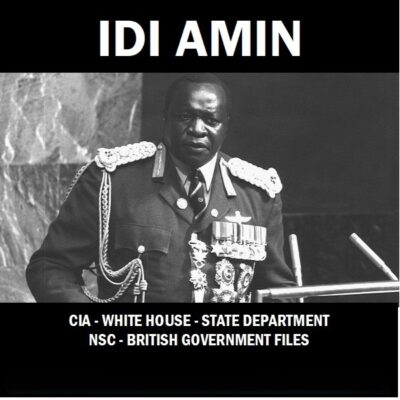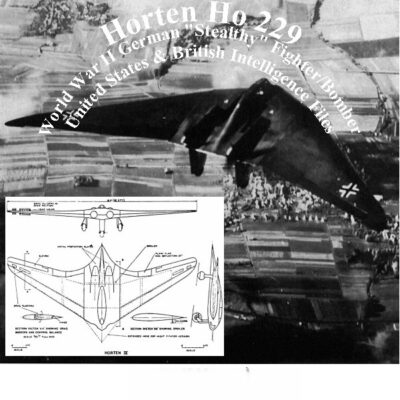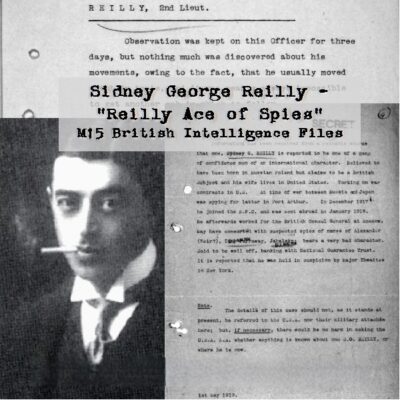
Mata Hari: Alleged Spy for Germany British Intelligence Files
$19.50
Description
Mata Hari: A Timeline and Cast of Characters
Detailed Timeline of Main Events
- August 7, 1876: Margaretha Geertruida Zelle (later known as Mata Hari) is born in Leeuwarden, Netherlands.
- Around 1894: Margaretha marries Campbell Macleod, a Dutch Army officer.
- Late 1890s – Early 1900s: Margaretha and Campbell Macleod move to Dutch East Indies (Java). During this time, she studies exotic temple dances and adopts the name “Mata Hari,” meaning “Eye of the Dawn.”
- 1902: Mata Hari returns to the Netherlands and leaves her husband.
- 1906: Mata Hari’s divorce from Campbell Macleod is finalized. She moves to Paris and begins her career as an exotic dancer and courtesan, gaining celebrity status and entering high social circles.
- June 1904 – July 1922: American newspapers publish articles about Mata Hari, reflecting the development of her legendary image.
- December 1915: Mata Hari attracts the attention of British Intelligence (MI5) and is arrested at Folkestone port while attempting to board a boat. She is interrogated but released due to lack of evidence.
- Post-December 1915: Mata Hari settles in The Hague. An MI5 informant reports that she is being paid by the German Embassy and is suspected of undertaking a mission for the Germans in France, having made acquaintances with French and Belgian officers.
- February 1916 – July 1931: The British Intelligence MI5 file on Mata Hari accumulates documents, including reports, memoranda, newspaper articles, interrogation transcripts, and biographical information.
- November 1916: British authorities remove Mata Hari from a steamer at Falmouth port while she is en route from Spain to Holland, mistakenly believing she is another German spy, Clara Bendix. She is interrogated again by MI5.
- During this interrogation, Mata Hari admits to being recruited by a Belgian officer to work for Belgian intelligence.
- She also states that the French consul in Vigo, Spain, asked her to spy on Russian forces in Austria.
- Despite these admissions, British authorities release her due to insufficient evidence to hold her.
- 1916 (According to French authorities): Mata Hari’s alleged spy activities for Germany begin after she is purportedly recruited in Berlin while performing as a dancer. The French become suspicious due to her relationships with individuals on both sides of the war and reports of her being paid by German Army officers.
- Late 1916 (According to French officials): Berlin allegedly advises two German attachés in Madrid that they are overpaying Mata Hari (Agent H-21) for information. They purportedly devise a plan to expose her by sending her back to Paris with a check for 5,000 francs drawn on a French bank, anticipating its interception by French intelligence.
- February 12, 1917: Upon her return to Paris, Mata Hari is arrested by French authorities and charged with being a German double agent. The uncashed 5,000 franc check and the intercepted German message are key pieces of evidence against her.
- 1917 (During her trial): The French military claims that 50,000 French lives were lost due to torpedoed transports, allegedly based on sailing information Mata Hari provided to the Germans.
- October 1917: Mata Hari is tried by a French military tribunal, found guilty of espionage committed between 1916 and 1917, and condemned to death.
- October 15, 1917: Mata Hari is executed by firing squad in France. British reporter Henry Wales witnesses and reports on the execution, noting that she was not bound, refused a blindfold, and faced her executioners with composure. A non-commissioned officer delivers a final shot to her head to ensure her death.
- Post-Execution: An MI5 report sent from Paris to London states that Mata Hari never made a full confession nor implicated any accomplices, suggesting she acted alone. The report also notes that there was never any concrete evidence that she passed on information of military importance.
Cast of Characters
- Margaretha “Margreet” Geertruida Zelle MacLeod (Mata Hari): A Dutch exotic dancer and courtesan. Born in 1876, she achieved fame in Paris and moved in high social circles. During World War I, she was accused by the French of spying for Germany, a charge she denied until her execution by firing squad in 1917.
- Campbell Macleod: A Dutch Army officer whom Margaretha Zelle married at the age of 18. He is reported to have been an abusive husband. They lived in the Dutch East Indies before she left him. Their divorce was finalized in 1906.
- “T”: The codename for MI5’s informant in The Hague who reported that Mata Hari was involved with highly placed people and was suspected of undertaking a mission for the Germans in France.
- Clara Bendix: Another individual whom British authorities initially believed Mata Hari to be when they removed her from a steamer in Falmouth in November 1916. This indicates the British were actively searching for German spies.
- Belgian Officer (Unnamed): According to Mata Hari’s testimony during her MI5 interrogation in November 1916, she was recruited by this officer to work for Belgian intelligence.
- French Consul in Vigo, Spain (Unnamed): Mata Hari claimed that this individual asked her to spy on Russian forces in Austria.
- Georges Ladoux: A French army captain who, according to the source, accepted Mata Hari’s offer to become a secret agent for France. He reportedly sent her to German-occupied Belgium with a list of contacts and later to Spain.
- German Naval and Military Attachés (Unnamed): While in Spain, Mata Hari was allegedly paid by the French government to form liaisons with these individuals. Later, according to French authorities, Berlin instructed two German attachés in Madrid that they were overpaying her.
- Agent H-21: The code name reportedly assigned to Mata Hari by German intelligence, referenced in the alleged communication from Berlin regarding her payment.
- Basil Thomson: A British intelligence officer who headed English homeland security during World War I. He interrogated Mata Hari at one point, as mentioned in an excerpt from his book “Queer People.”
- Henry Wales: A British reporter working for the International News Service who provided an eyewitness account of Mata Hari’s execution.
- Lafenestre (Mentioned in MI5 report): An individual in Paris with whom the author of the MI5 report had conversations regarding Mata Hari, indicating an ongoing investigation or information gathering process.
Mata Hari: Alleged Spy for Germany British Intelligence Files & Newspaper Articles
229 pages of MI5 British intelligence files, photographs, newspaper articles, and history covering Margaretha “Margreet” Geertruida Zelle MacLeod, also known as Mata Hari, who was accused of spying for Germany during World War I.
Mata Hari, legal name Margaretha Geertruida Zelle MacLeod (August 7, 1876 – October 15, 1917), was a Dutch exotic dancer and courtesan. While in the custody of French officials, a French military court convicted her of spying for Germany. She was executed by firing squad on October 15, 1917.
During the time of Mata Hari’s alleged espionage activities, she was interrogated twice by the British Secret Service (MI5). She first attracted British attention in December 1915, when she was arrested at the Folkstone English port while she was attempting to board a boat. After her interrogation, MI5 could find no evidence against her, so she was released.
She settled in The Hague and an informant later claimed she was being paid by the German Embassy. MI5’s informant in The Hague, codenamed “T”, reported: “Mata Hari is a demi-mondaine who is in relation with highly placed people and during her sojourn in France she made the acquaintance of many French and Belgian officers. She is suspected of having been to France on an important mission for the Germans.”
In November 1916, British authorities removed Hari from a steamer at Falmouth port when she was enroute to Holland from Spain, believing she was another German spy, Clara Bendix. She was again interrogated by MI5 and admitted to being recruited by a Belgian officer to work for his country’s intelligence service. She also said the French consul in Vigo, Spain, asked her to spy on Russian forces in Austria. There was insufficient evidence to hold her and she was released.
A MI5 report sent from Paris to London after her execution stated, “She never made a full confession nor can I find, either from the dossier, or from my conversations with Lafenestre, that she ever gave anyone as her accompice. She was a ‘femme forte’ and she worked alone.” Mata Hari’s MI5 files notes that there was never any evidence that she passed on anything of military importance.
British Intelligence MI5 Report
The 139 page file contains documents dating from February 1916 to July 1931. They include reports, memorandum, newspaper articles, transcript of interrogations conducted by British agents, and biographical information.
American Newspapers
44 complete pages of American newspapers containing articles about Mata Hari. The accuracy of the information contained in these articles may be hard to determine. However, they do accurately reflect the formation of the Mata Hari legend. The articles date from June 1904 to July 1922. The newspapers include: New York Tribune, New York Evening World, Philadelphia Public Ledger, Richmond Times-Dispatch, Washington Herald, Washington Times, and more.
Eyewitness Account of Execution
The text of the reporting by British reporter Henry Wales for the International News Service. Wales reported that she was not bound and refused a blindfold. Wales wrote that after the volley of shots rang out, “Slowly, inertly, she settled to her knees, her head up always, and without the slightest change of expression on her face. For the fraction of a second it seemed she tottered there, on her knees, gazing directly at those who had taken her life. Then she fell backward, bending at the waist, with her legs doubled up beneath her”. A non-commissioned officer then walked up to her body, pulled out his revolver, and shot her in the head to make sure she was dead.
Photographs
30 photographs from her modeling and dancing career, photos taken by French officials at the time of her arrest and again before her execution.
Basil Thomson Excerpt
An excerpt from Thomson’s book “Queer People” about English homeland security during World War I. Chapter 15 covers female spies during World War I. As a British intelligence officer he once interrogated Mata Hari.
About Mata Hari
She was born Margaretha Gertruida Zelle in Leeuwarden, Netherlands, on August 7, 1876, to a prosperous Dutch shopkeeper, who later went bankrupt, and a Javanese mother. At 18 years of age she married Campbell Macleod, a Dutch Army officer. MacLeod is reported to have been an abusive husband. The couple moved to Dutch East Indies, Java Island, after the Dutch military assigned him to command a battalion stationed there.
While in the Dutch East Indies she studied exotic temple dances and called herself “Mata Hari” which means “Eye of the Dawn.” After returning to the Netherlands in 1902, she left her husband and a divorce was finalized in 1906. She moved to Paris and became an exotic dancer and courtesan for wealthy clients. Her dancing lead Mata Hari to celebrity status and she moved among the highest social circles of Europe.
In 1915, Hari returned to Paris to see a wounded Russian officer she was involved with. French officials became suspicious of her and she was detained for questioning. She denied being a German spy. She countered with an offer to become a secret agent for France. Her offer was accepted by French army captain Georges Ladoux and she was sent to German occupied Belgium, with a list of six undercover agent contacts. She was transferred to Spain, a neutral country during World War I, where she was paid by the French government to form liaisons with German naval and military attachés.
According to French authorities her spy activities began in 1916, two years after the beginning of World War I. It is purported that she was recruited by German intelligence while performing as a dancer in Berlin. The French became suspicious when they discovered Hari had lovers on both sides of the war. The French claimed to have discovered that German Army officers were also paying her. According to French officials toward the end of 1916, Berlin advised two German attachés in Madrid that they were paying too much for the information from Hari (Agent H-21). They decided to expose her as a spy by sending her back to Paris with a check payable by a French bank for 5,000 francs. An incriminating message regarding Hari was sent from Berlin and intercepted by the French secret service; the French claimed the Germans had planned that the message would be intercepted. After returning to Paris she was arrested February 12, 1917 and charged with being a German double agent. The evidence used to sustain the charge was the uncashed 5,000 franc check drawn on the bank specified in the intercepted German message.
During her trial the French military claimed that 50,000 lives were lost when French transports were torpedoed in the Mediterranean with information about sailings they claimed she supplied.
Hari was tried and found guilty by a French tribunal of committing espionage from 1916 to 1917. Despite her desperate claims of innocence, she was condemned to death. On October 15, 1917, she was shot dead by firing squad.





Related products
-

Idi Amin White House – State Department – NSC – CIA – British Government Files
$19.50 Add to Cart -

CIA and Post WWII Intelligence Community Creation Documents
$19.50 Add to Cart -

Horten Ho 229 German “Stealthy” Fighter/Bomber Aircraft American & British Intelligence
$19.50 Add to Cart -

Sidney George Reilly – “Reilly Ace of Spies” MI5 British Intelligence & Royal Air Force Files
$19.50 Add to Cart